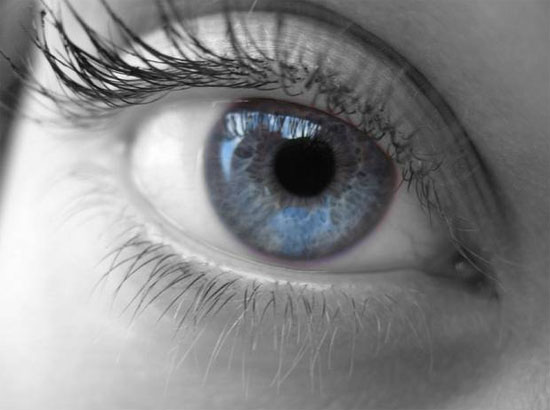Implant human eyes on cicada wings
Scientists at James Cook University (Australia) have successfully conducted an experiment that is no different from a witch's fairy tale, a human eye implant on cicada wings.
The reason scientists choose wings to make 'soil' to transplant corneal cells is because it is antiseptic and makes these cells easily proliferate.

Scientists hope that the future will create
A large corneal mass serves the blind.
Ten years ago, Dr. Greg Watson during a stroll in the garden of his private villa suddenly noticed a strange phenomenon: Cicadas after the summer died, fell to the ground. But while their bodies had decomposed, the wings remained intact.
Picking up those wings, he brought them to the lab under the electron microscope and discovered that it was interesting that the bacteria that came into contact with the wings would die instantly.
Watson became the first scientist in the world to understand that bacteria can die because of a substance in nature, not the synthetic chemicals.
Watson thought: The wing has a strange property that is self-cleaning. Contaminants (biologically understood) cannot stick. So the wing surface can be a magical 'land' to grow cells without fear of bacterial destruction. 'Corneal cells do not find a place to develop more smoothly. Just try it! ' , he thought.
The first experiments by Australian scientists have achieved good results. He and his colleagues hope that, one fine day, they will be able to develop a technology that creates a significant amount of corneal mass so that it can bring sight to the blind.
- Cicada's love song entered the US Navy's sights
- Watching 'flying elephants' is extremely poisonous in Vietnam
- The process of pupating molting into cicadas
- Eyes on the wings
- People use fluent eyes language from birth
- 19 most obsessive eyes in the history of world photography
- Human head implant surgery is about to come true?
- Successfully implanted artificial eyes for humans
- How far are our eyes?
- Chinese doctor: Do not consider the first implant to be a monster
- Implant liquid into human brain to be smarter
- The mystery of eyes 'killing people with just one look'
 Green tea cleans teeth better than mouthwash?
Green tea cleans teeth better than mouthwash? Death kiss: This is why you should not let anyone kiss your baby's lips
Death kiss: This is why you should not let anyone kiss your baby's lips What is salmonellosis?
What is salmonellosis? Caution should be exercised when using aloe vera through eating and drinking
Caution should be exercised when using aloe vera through eating and drinking